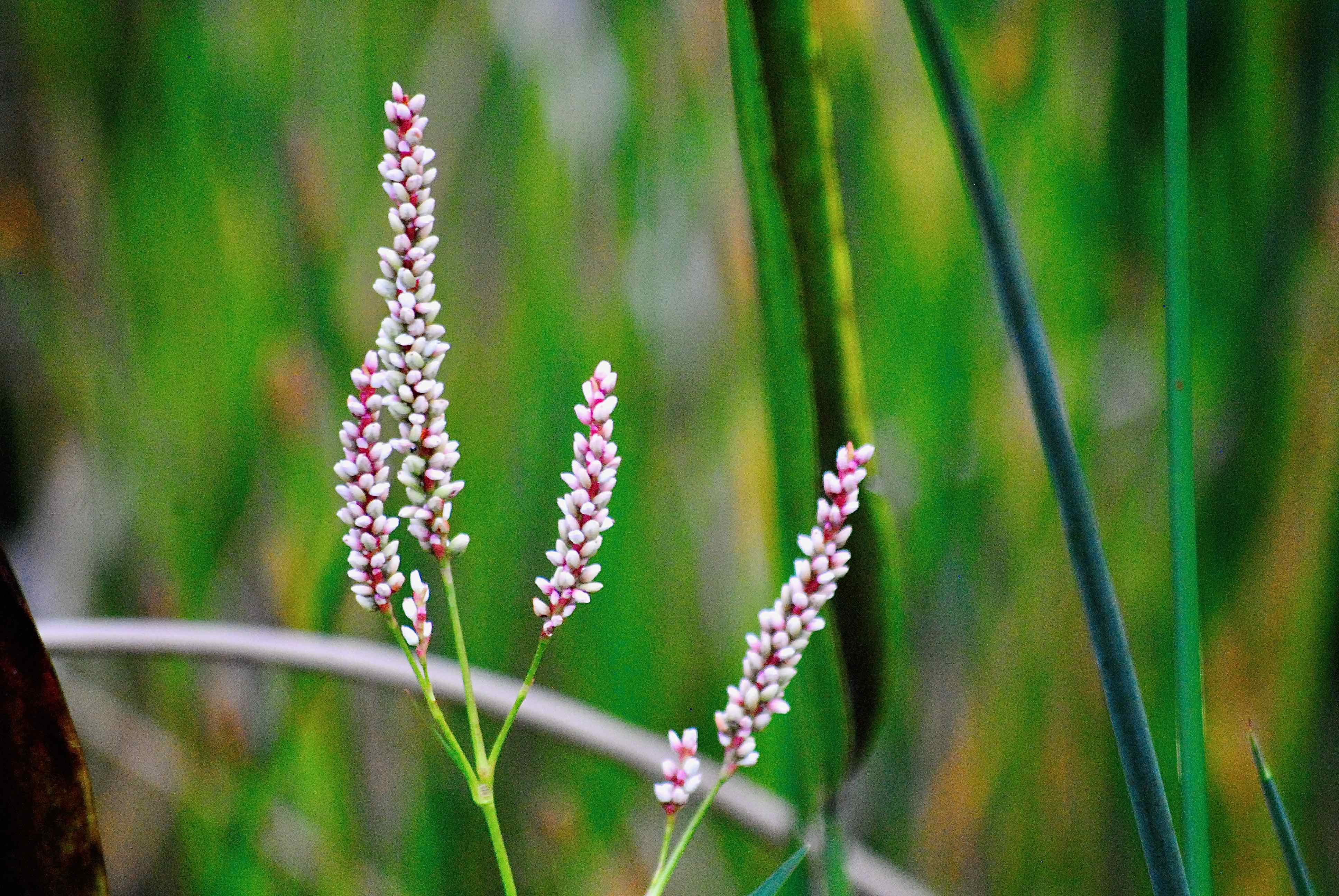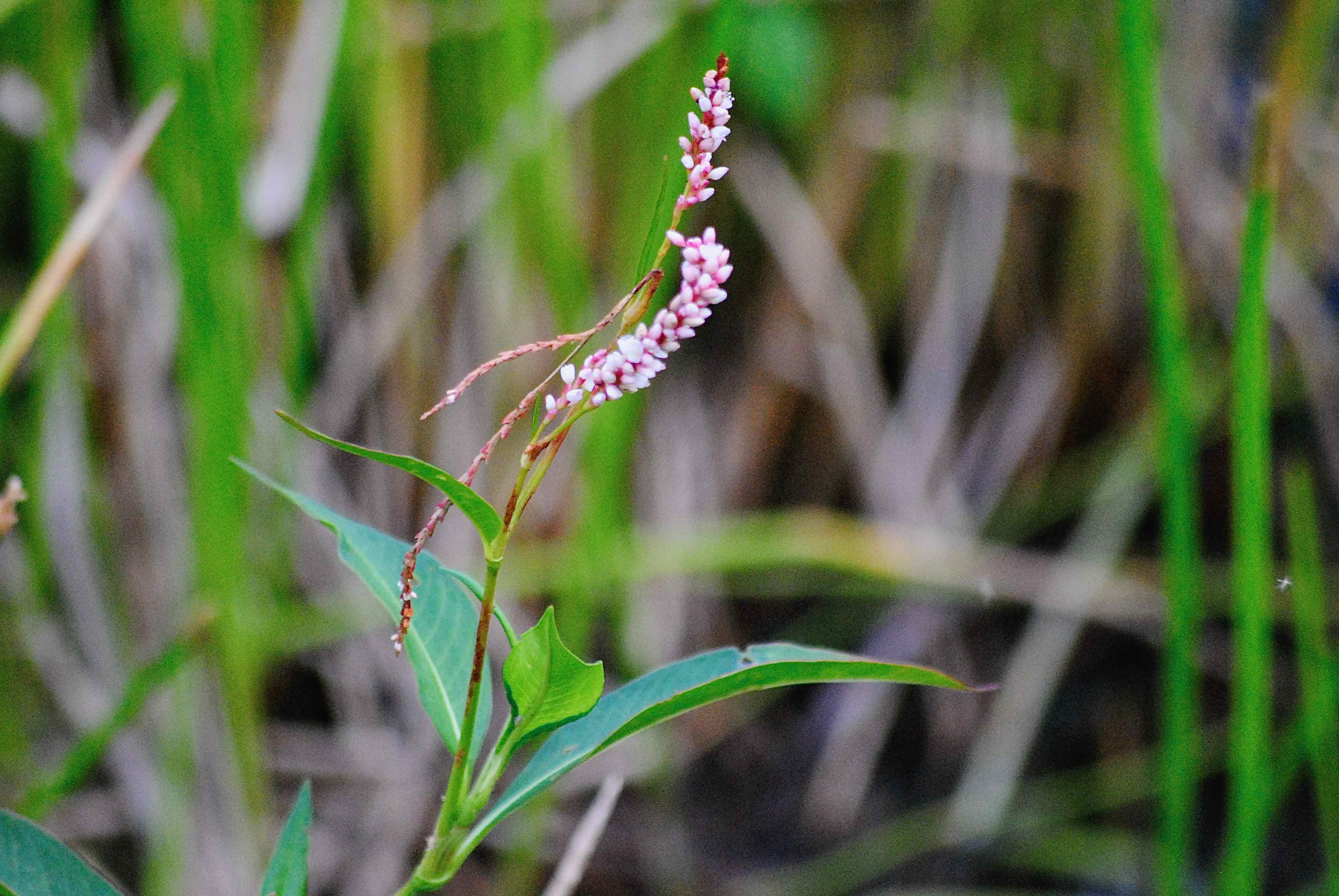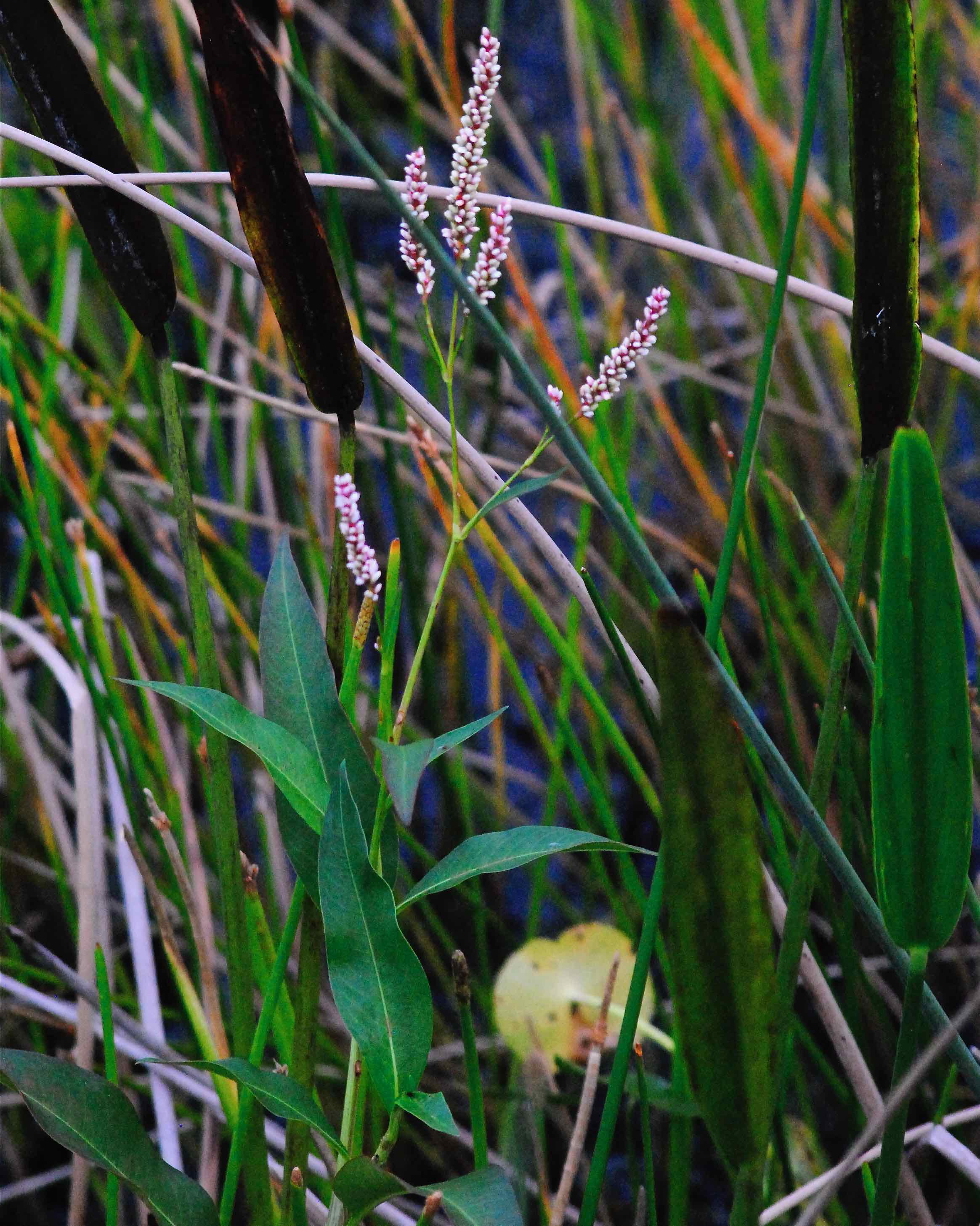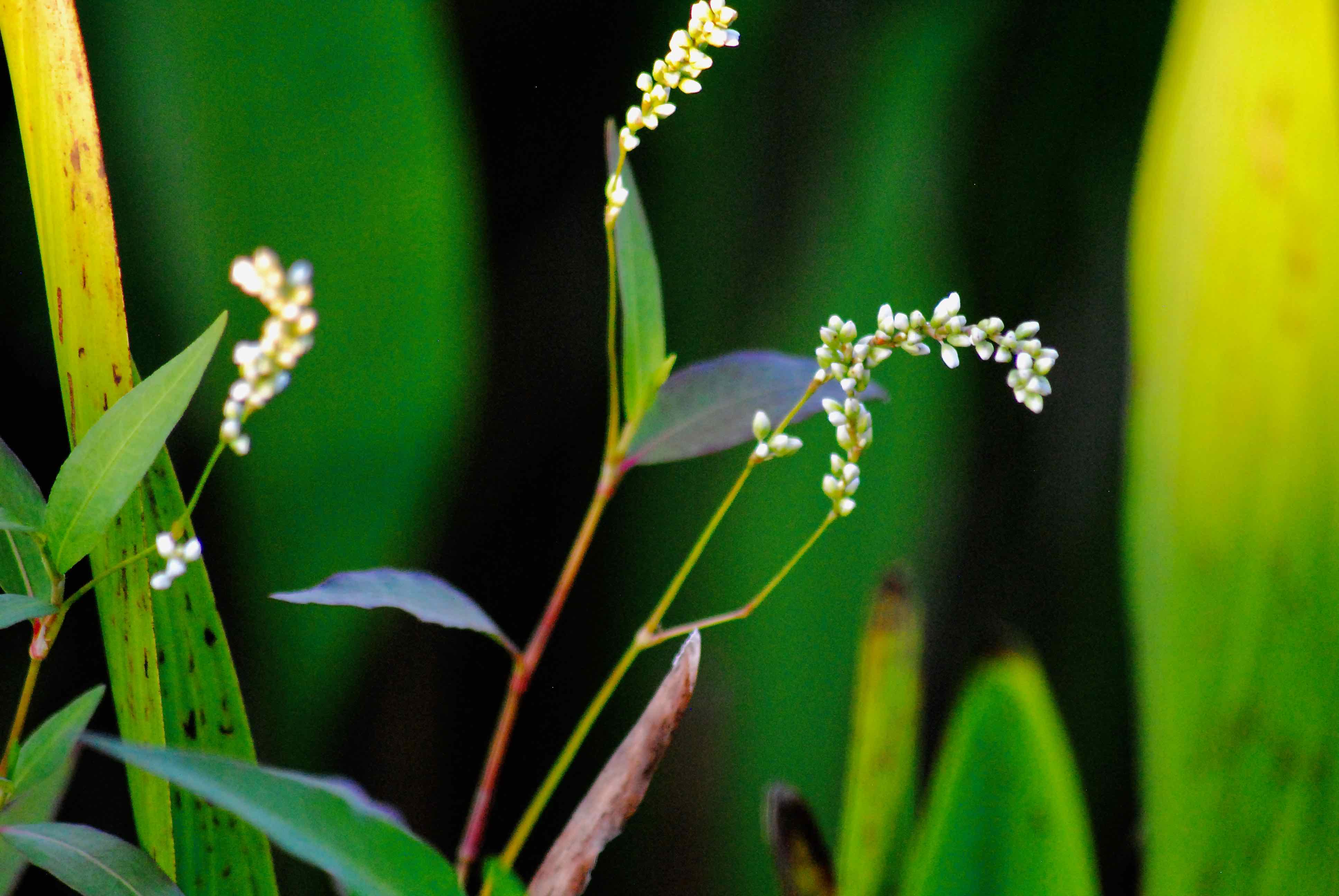
Mild water-pepper, photographed at Green Cay Nature Center, Boynton Beach, in October 2014.
Mild water-pepper, Polygonum hydropiperoides, might run afoul of truth-in-labeling laws if truth-in-labeling laws applied to common names of plants. It isn't exactly mild.
In fact, according to our favorite Florida forager, the stuff will will give your mouth a good burn if you're not careful. But it is edible, and can be used (in moderation) to season foods.
It does live up to at least one part of its name: mild water-pepper grows in water — marshes, wet prairie and wetlands. Other names include smart swampweed, knotweed and mild water pepper. It is a Florida native, found in almost all of the state. It's also native to almost the entire United States — it is an introduced plant in Alaska — but somehow managed to exclude Utah, Colorado and Wyoming from its native range. Two states, New York and Indiana, list it as threatened. It's also native to much of Canada, the Caribbean, Mexico, Central America and South America.
Mild water-pepper is rather modest, growing perhaps one or two feet tall, but will creep along the ground via rhizomes, or underground stems, and form large mats. In places, mild water-pepper can be dense enough to clog irrigation and drainage ditches. The leaves are lance-shaped, long and narrow; there are swollen nodes called ocreae where the leaves meet the stem. That's a hallmark of Polygonaceae, the family to which mild water-pepper belongs.
The flowers are small, red to pink and white, bunched on a spike called a inflorescence. Mild water-pepper is a perennial and blooms spring to fall. The plant can vary in appearance so much that it has spawned a host of scientific names given by botanists who think they are seeing something a little different than textbook mild water-pepper. The U.S. Department of Agriculture's PLANTS database lists 19 different synonyms for mild water-pepper. You'll see some references using Persicaria hydropiperoides as the scientific name for mild water-pepper.
As with all aquatic plants, submerged portions of mild water-pepper provide cover to a host of creatures at the bottom of the food chain. The seeds are food for ducks and other birds as well as small mammals. It is cultivated mostly for use in restorations and natural landscapes, but it's also used along the edges of ponds. It's shown ability to reduce the levels of phosphorus and nitrogen in water used in aquaculture. The soil has to be moist to wet; it does not tolerate drought or salt water. Mild water-pepper likes full sun but tolerates some shade as well.
Native Americans used mild water-pepper to stop intestinal and uterine bleeding. It is also a diuretic. Mild water-pepper also has been used in traditional medicine for respiratory problems and to control bleeding. At least one lab study of commonly used medicinal plants in Brazil showed that mild water-pepper to have some antibacterial properties.
As noted above, mild water-pepper is a member of Polygonaceae, the buckwheat family.
Click on photo for larger image
Links for Mild Water Pepper



